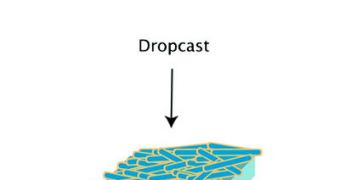A group of investigators from the United States announces the development of method for producing hybrid thermoelectric materials, that are just as efficient as any other materials in their class, but at a fraction the cost.
Thermoelectrics are materials that can transform electricity directly into heating or cooling. They are currently used as a luxury feature on expensive automobiles, to create climate-controlled seats.
One of the most important things about these materials is that they also work the other way around, in the sense that they can also be used to convert excess heat from systems such as engines into electricity.
As such, they could hold tremendous value for a wide number of industries around the world, if it weren't for their high manufacturing costs.
This is precisely why researchers from the US Department of Energy's (DOE) Lawrence Berkeley National Laboratory (Berkeley Lab) wanted to step in and innovate the available production techniques for this material.
According to the deputy director of the Inorganic Nanostructures Facility (INF), Jeff Urban, experts at the lab did so by “changing the budget for thermal energy management.”
The INF is a division of the Berkeley Lab nanoscience user facility, the Molecular Foundry. Scientists here are involved in other advanced studies as well, but this particular one is conducted with two clear objectives in mind.
The first is to innovate a series of industries that could use these materials, and the second is to develop a new way of reducing the emissions of greenhouse gases such as carbon dioxide (CO2).
“Historically, high-efficiency thermoelectrics have required high-cost, materials-intensive processing,” the expert explains.
“By engineering a hybrid of soft and hard materials using straightforward flask chemistry in water, we’ve developed a route that provides respectable efficiency with a low cost to production,” he adds.
In order to obtain the new materials, the team created nanorods of tellurium, a chemical that is commonly used in solar cells. Then they developed a technique for wrapping electricity-conducting polymers around the nanorods.
“In recent years, we’ve seen tremendous gains in thermoelectric efficiency, but there is a need for low-cost, moderate efficiency materials that are easy to process and pattern over large areas,” argues Berkeley Lab faculty scientist Rachel Segalman.
“We had a lot of intuition about what would work using polymers and nanocrystals, and will now explore materials space to optimize these systems and switch to more earth-abundant materials,” the expert says.
She holds an appointment as a professor of chemical and biomolecular engineering at the University of California in Berkeley (UCB).
Details of the new study appear in a paper entitled “Water-processable polymer-nanocrystal hybrids for thermoelectrics,” that is now available in the latest online issue of the esteemed scientific journal Nano Letters.

 14 DAY TRIAL //
14 DAY TRIAL //